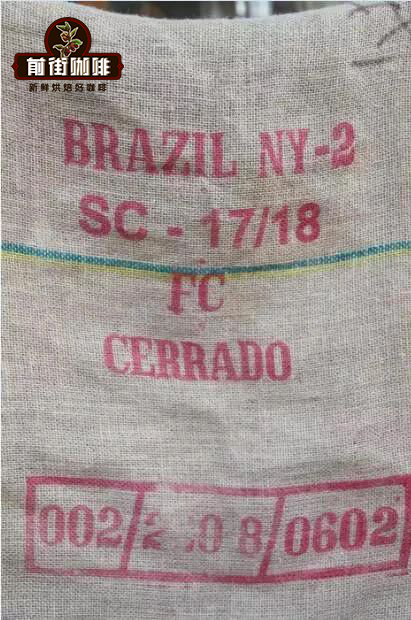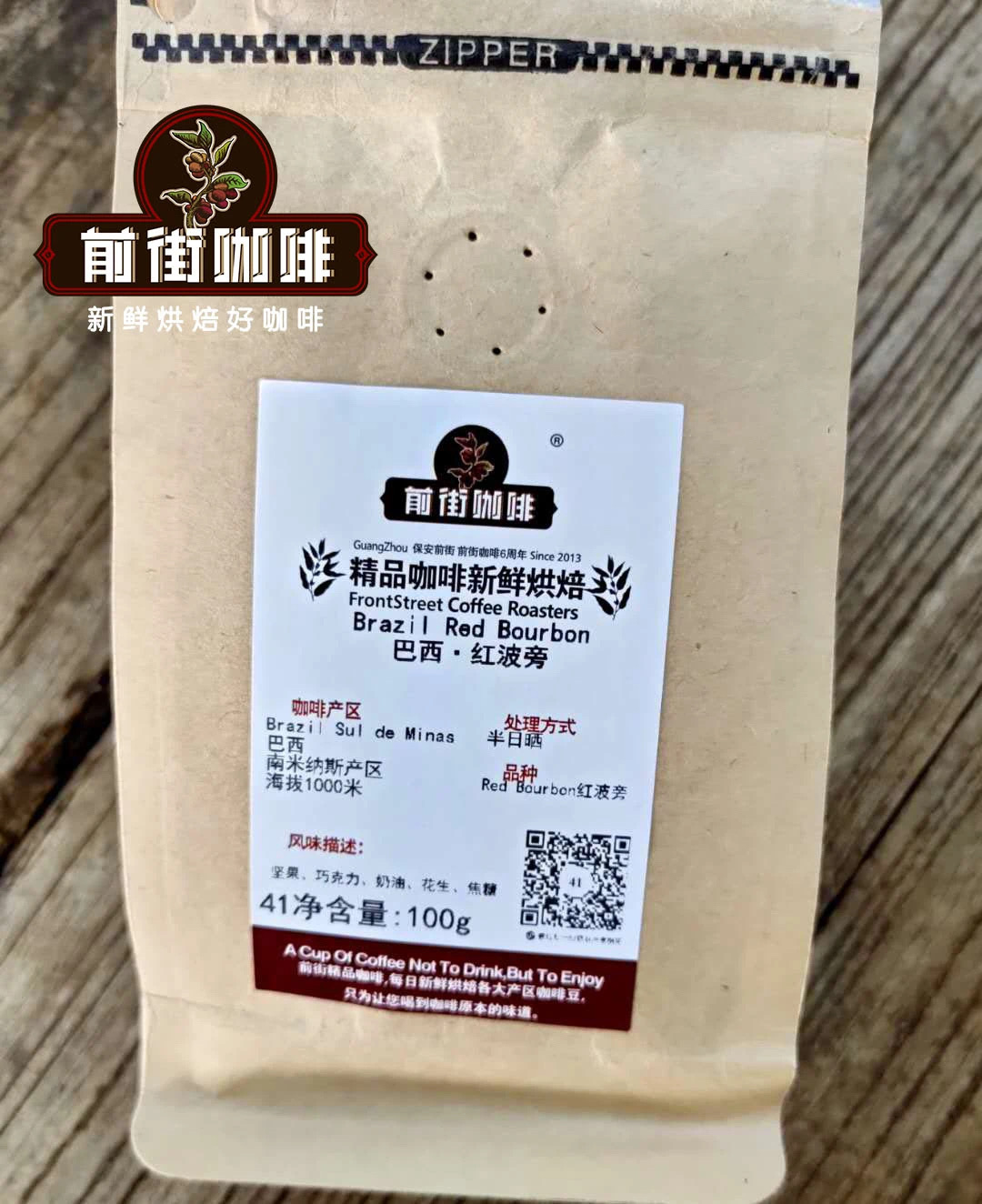The taste characteristics of Brazilian coffee beans describe what Brazilian coffee beans taste good, and the Brazilian grading system is introduced.
Brazil is the most important coffee producer in the world, accounting for 1x3 of the world's total output, and it is also the second largest coffee consumer in the world (the first is the United States). The length of the dry season in Brazil may even affect the price of coffee in the world, especially due to the impact of the epidemic this year, the progress of coffee harvest in Brazil has slowed down. The most important feature of Brazilian coffee is that the altitude is not as high as that of the surrounding coffee-producing countries. According to the defining conditions of fine coffee: altitude (≥ 1200 meters), variety, treatment method, cup test score (more than 80 points), then altitude alone, coffee beans in many Brazilian producing areas can not meet Brazil as the largest coffee producing country. There are large quantities of commercial coffee based on commodities. There are also boutique coffee dominated by COE. In the bean list of Qianjie coffee, although Brazil has a high yield, it can only occupy two "seats" because of its stable flavor formed by its high level of mechanization. Then let's unveil Brazilian coffee and explore the choice between quantity and quality.

History of Coffee cultivation in Brazil
The Brazilian coffee bean variety was introduced to Brazil from French Guiana in the 1720s. Francesco Paletta, a Portuguese captain from Brazil, captured the heart of the then governor's wife in Cayenne, the capital of French Guinea, and successfully brought coffee seeds to Brazil. Since then, coffee has adapted quickly in Brazil, spreading from the north to the southeastern state of Sao Paulo and the southern province of Parana, where it is at slightly higher latitudes and Frosts Descent in winter, resulting in heavy losses to farmers.
From 1970 to 1980, Brazilian farmers developed the warmer provinces of Minas and Bahia in the northern state of Sao Paulo, which are less warm in winter than Frosts Descent until today Minas has become one of the main producing areas of Brazilian boutique coffee.
Before 1990, the Brazilian government carried out strict monitoring of the coffee industry, with both strict intervention and price protection measures, and the state has been implementing minimum price protection measures for farmers, resulting in coffee overproduction.
Since the opening of the free market in 1990, the original Brazilian Coffee Authority (IBC) has been replaced by the National Economic Association, the country's non-investment administrative body, which pursues a policy of non-interference and allows producers to negotiate directly with exporters. The business activities of exporters are supervised by the government legislation, and the relevant departments register legitimate exporters. Since 300 years ago, coffee has become the main source of economy in Brazil, and Brazil has also become the largest producer of coffee in the world.
So what exactly is the taste of Brazilian coffee beans? The main variety of Brazilian boutique coffee is bourbon.
Red bourbon is what we call bourbon species. The coffee fruit appears wine red when it is ripe, and the bean body of the coffee bean is round. Planted in bourbon at high altitude, it usually has a better aroma and bright acidity, and tastes like red wine.

Half-sun coffee treatment
Half-sun is to remove the peel and pulp of coffee berries, which can control the degree of fermentation of pectin coffee beans after peeling and peeling. The traditional sun is the sun with peel and pulp, so the fermentation degree of pectin can not be seen. The half-sun treatment is between the sun treatment and the water washing treatment, but there is no "pool fermentation and water washing" process of the water washing treatment, but it is directly exposed to the sun. Although the method seems to be similar, without the step of fermentation, the flavor of coffee beans is completely different. Half-sun treatment in the process of removing the pulp of coffee peel, the ripe pulp will be easily removed, and the immature green fruit peel is not easy to deal with, so a second screening can be carried out to filter the immature fruit and unify the maturity of the coffee fruit. Compared with the sun drying method, Qianjie believes that the cleanliness and maturity of the coffee beans will be improved, resulting in a more uniform taste of coffee. The introduction of half-sun treatment does not mean that it is used in all Brazilian producing areas. Shirado with low incense humidity is mainly used in the sun treatment, while half-sun hair is a supporting role in Hiladow, and the red wave side of the region is treated by half-sun treatment. Cooking flavor: high sweetness, clean, supple, low acid value, peanut, almond, nut, chocolate flavor.
Classification of Brazilian coffee beans
Brazil is relatively low in altitude among many coffee-growing countries in Central and South America, so Brazil does not emphasize hard beans that can only be grown at high elevations, as in other countries such as Colombia. Instead, Brazilian coffee beans are graded according to particle size, defect rate, cup score and flavor.
Flavor grades: from high to low, Strictly Soft is very supple, Soft is very supple, Softish is a little supple, Hardish is not palatable, Rioy iodine choking taste.
Classification of defect rate: according to the number of defective beans, 6 defective beans are NY.2 for every 300g raw beans. Completely flawless beans can become NY.1, while completely flawless beans are rare and unable to maintain a certain supply, so among the raw beans in Brazil, the best is NY.2.
Types
Number of defective beans (per 300 grams)
NY.2 6
NY.2/3 9
NY.3 13
NY.3/4 21
NY.4 30
NY.4/5 45
NY.5 60
NY.5/6 > 60
Cup test quality classification: from high to low, Fine Cup, Fine, Good Cup, Fair Cup, Poor Cup, Bad Cup. FC (Fine Cup) and GC (Good Cup) are more common. Particle size classification: in Brazil, the largest number of coffee beans is 19 mesh, but the yield is not much, so 17 mesh, 18 mesh is the highest grade.
Types
Quality
NY.2
17-18 mesh FC
NY.2/3
14-16 mesh FC
NY.3/4
DD Quality
NY.4/5
14-16 mesh GC
Important Notice :
前街咖啡 FrontStreet Coffee has moved to new addredd:
FrontStreet Coffee Address: 315,Donghua East Road,GuangZhou
Tel:020 38364473
- Prev

The difference of Rose Summer Coffee Bean Grade-what is the biggest difference between Red Standard Rose Summer and Green Standard Rose Summer in Jade Manor
The rose summer coffee bean became famous because the jadeite manor discovered it, cultivated it and won the championship of the Panamanian coffee raw bean competition in one fell swoop. In the following two decades, it was basically won by the emerald manor. The English name is geisha, and the Japanese call it a geisha. Later, Mr. Yuan introduced it to the Chinese market, and
- Next

How to make good coffee? Hand brewed coffee steams teaching. What is the purpose of steaming coffee?
There are a lot of hand brewed novices who ask a question: Why does hand brewed coffee need to be steamed? One of the most indispensable steps in making coffee by hand is the steaming link. The purpose of steaming is to release gas and ensure uniform extraction of coffee, but also to clearly understand whether the brewed beans are fresh. Front Street specializes in freshly roasted coffee beans
Related
- Beginners will see the "Coffee pull flower" guide!
- What is the difference between ice blog purified milk and ordinary milk coffee?
- Why is the Philippines the largest producer of crops in Liberia?
- For coffee extraction, should the fine powder be retained?
- How does extracted espresso fill pressed powder? How much strength does it take to press the powder?
- How to make jasmine cold extract coffee? Is the jasmine + latte good?
- Will this little toy really make the coffee taste better? How does Lily Drip affect coffee extraction?
- Will the action of slapping the filter cup also affect coffee extraction?
- What's the difference between powder-to-water ratio and powder-to-liquid ratio?
- What is the Ethiopian local species? What does it have to do with Heirloom native species?

